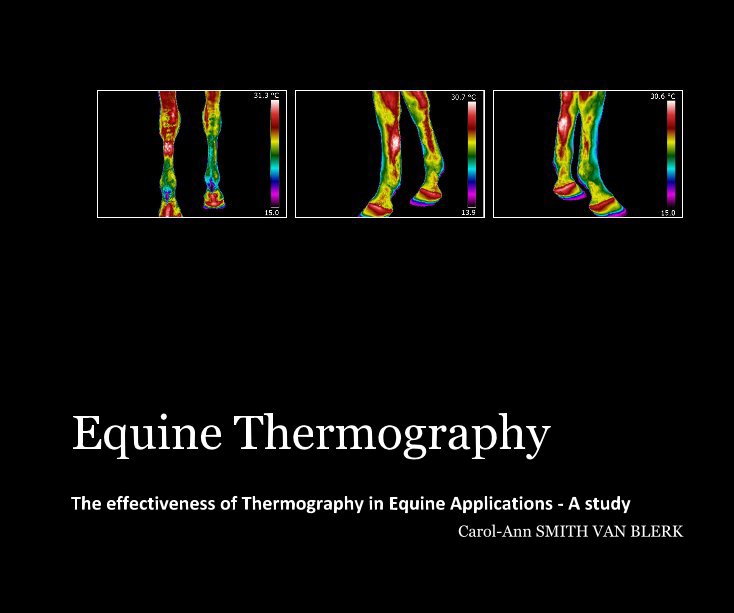Equine Thermography
The effectiveness of Thermography in Equine Applications - A study
by Carol-Ann SMITH VAN BLERK
This is the price your customers see. Edit price list
This book is available to buy on Amazon
About the Book
This guide offers both professionals and horse owners alike an easy appreciation of the use of Thermography in Equine applications.
Thermography is the use of infra-red camera body imaging to show superficial temperature differences.
Whilst Thermography will not necessarily tell us what the problem is, it can certainly tell us where problems may lie. It can be an useful tool for locating areas of elevated heat on the body of a horse and so giving us a good starting point for further exploration and diagnosis by a veterinary professional.
Infra-Red imaging in Equine Applications spans a broad range of uses, including identification of inflammation, follow up and monitoring of the healing process, along with practical horse husbandry like saddle fitting and hoof balance.
Thermography is the use of infra-red camera body imaging to show superficial temperature differences.
Whilst Thermography will not necessarily tell us what the problem is, it can certainly tell us where problems may lie. It can be an useful tool for locating areas of elevated heat on the body of a horse and so giving us a good starting point for further exploration and diagnosis by a veterinary professional.
Infra-Red imaging in Equine Applications spans a broad range of uses, including identification of inflammation, follow up and monitoring of the healing process, along with practical horse husbandry like saddle fitting and hoof balance.
Author website
See More
About the Creator
Carol-Ann Smith van Blerk
Ste. Alauzie, Lot, FRANCE
I am based in France and compete in Endurance competitions at international level. Horses are my passion, and an injury to one of my horses initiated my study into the value of Equine Thermography. I work with Trotters in a Training Yard as well as with Endurance Horses and local Vets, and to date have taken over 11 000 images. These images and the diagnostics by Vets, Equine Osteopaths and Farriers have made for a fascinating study which is ongoing.


